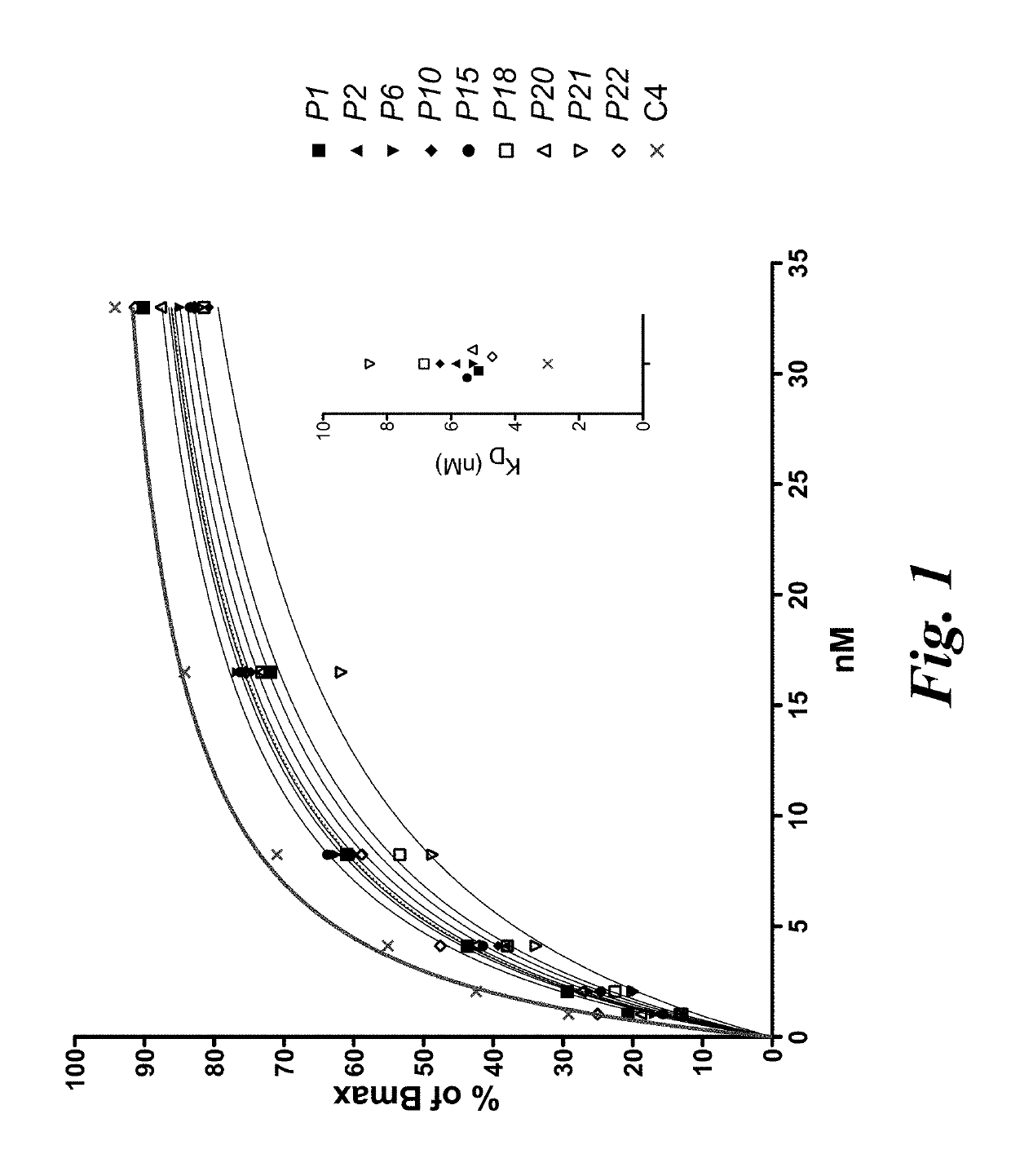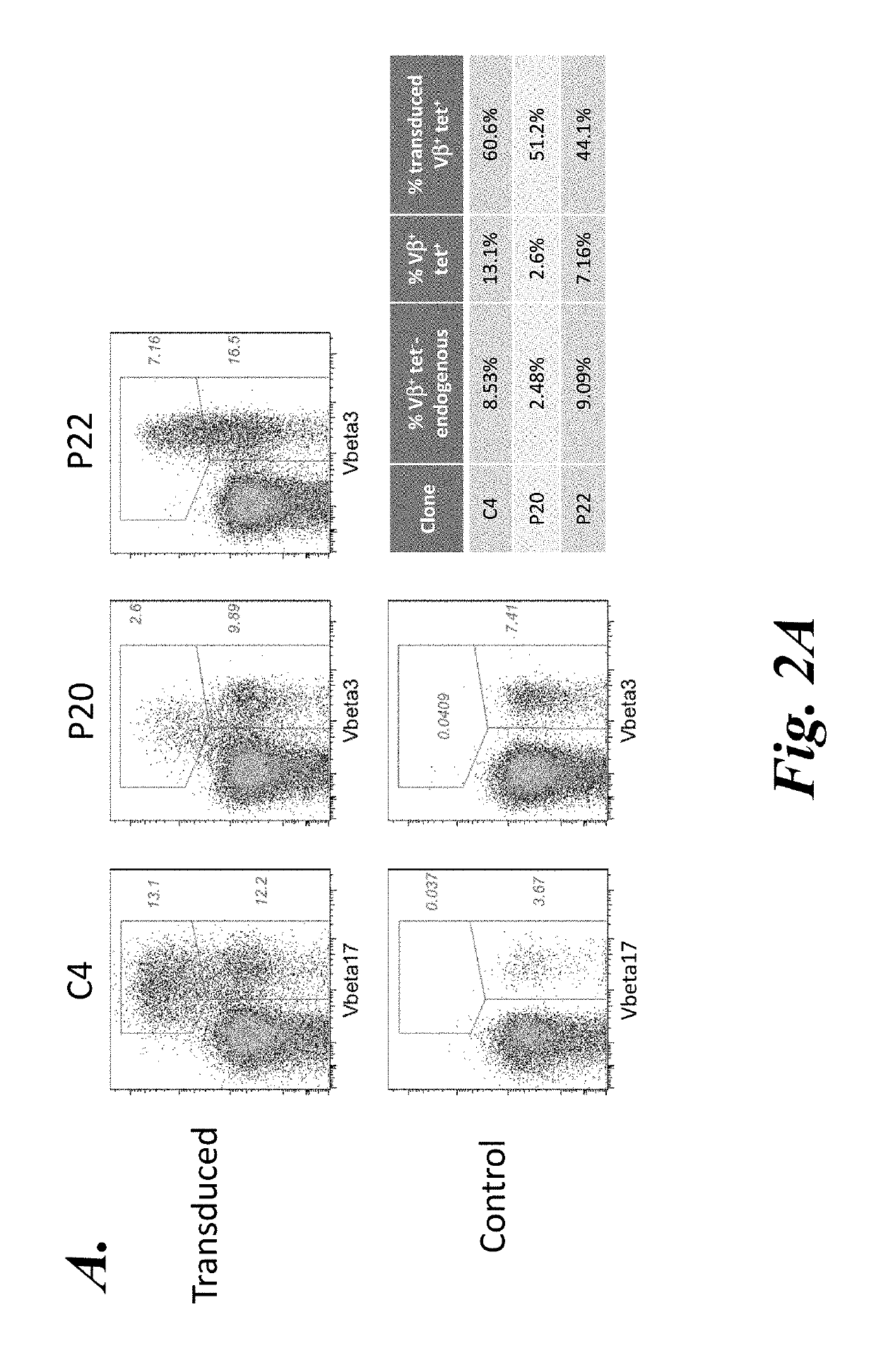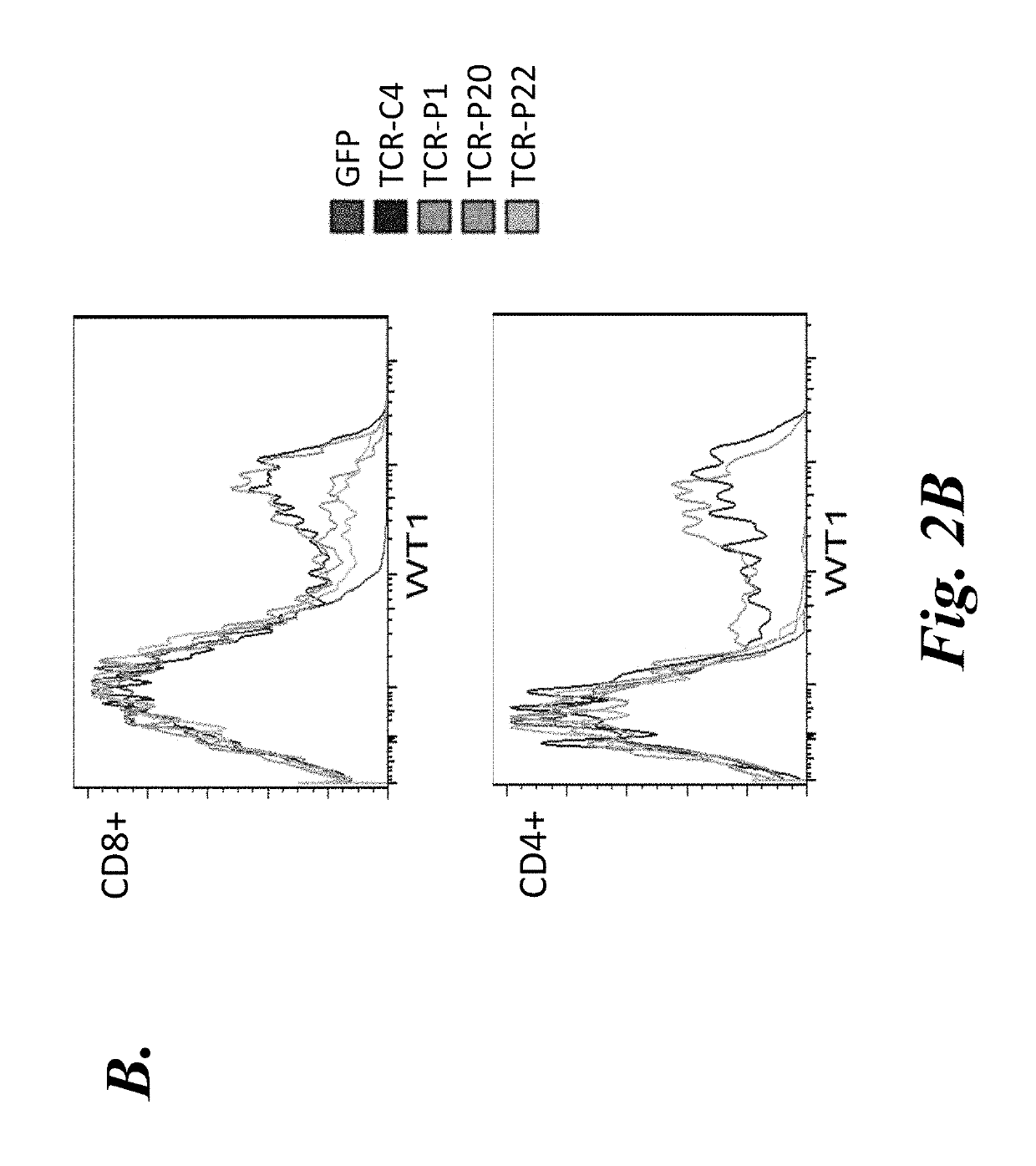T cell immunotherapy specific for WT-1
a t cell receptor and immunotherapy technology, applied in the field of high affinity or enhanced affinity t cell receptors, can solve the problems of limiting the diversity of generated libraries, mhc contact residue changes may create risk, and increase the likelihood of cross-reactivity,
- Summary
- Abstract
- Description
- Claims
- Application Information
AI Technical Summary
Benefits of technology
Problems solved by technology
Method used
Image
Examples
example 1
Methods
Lentiviral Constructs
[0115]Various TCR expression constructs were generated containing codon-optimized TCRα and TCRβ genes, derived from an HLA-A2-restricted CD8+ T cell clone (C4), encoding a high affinity TCR specific for a WT-1 peptide RMFPNAPYL (SEQ ID NO.:16) complexed with an HLA receptor. The TCRα- and TCRβ-encoding nucleic acid molecules were linked by a 2A element from the porcine teschovirus (P2A) to ensure coordinated expression under the control of a murine stem cell virus (MSCV) U3 promoter. In certain embodiments, the portions of the nucleic acid molecules encoding the constant domains of the C4 TCRα and TCRβ were modified to express complementary cysteine residues at positions 48 (Thr to Cys) and 57 (Ser to Cys), respectively, to promote inter-chain pairing of the C4 TCR chains and to minimize mispairing of the exogenous C4 TCR chains with endogenous TCR chains.
[0116]The vector pRRLSIN-C4α-P2A-C4β contained the TCR expression construct ligated into the pRRLSIN....
example 2
Identification and Cloning of High Affinity WT-1-Specific TCRs
[0123]In order to identify high affinity HLA-A2-restricted WT-1126-134-specific T cell clones, T cell clones were generated from the peripheral repertoire of more than 50 donors. The top ten clones that exhibited the highest apparent affinity by tetramer staining were further assessed by staining each clone with titrated concentrations of WT-1 tetramer and fitting the resulting mean fluorescence intensity data to a saturation binding curve (FIG. 1). TCRα and TCRβ gene sequences were identified by RACE PCR and sequencing of the four clones with the highest relative affinity was performed (C4, P1, P20, and P22).
[0124]To further characterize the WT-1126-134-specific TCRs from these candidate T cell clones, codon-optimized expression constructs were generated for each TCRα and TCRβ chain pair. For each construct, the α and β chains were separated by a P2A element to promote coordinated expression of the TCRα and TCRβ chains (...
example 3
Improving the High Affinity WT-1-Specific TCRC4 Construct
[0127]As described in Example 2, the wild-type (WT) TCRC4 expression construct (C4αβ WT) was generated from full-length TCRα and TCRβ produced by 5′-RACE PCR from the TCRC4 clone. This construct included the nucleic acid encoding the C4 TCRα chain in the 5′-position, followed by a P2A element, and then the nucleic acid encoding the C4 TCRβ chain. Although T cells expressing this construct expressed similar levels of transgenic Vβ17 chain on the cell surface, WT-1 tetramer staining was essentially undetectable, indicating that despite the cysteine modification, this construct did not result in sufficient TCR gene expression to out-compete the endogenous TCR. As described in Example 2, the next step was to generate a codon optimized TCRC4 construct (see Scholten et al., Clin. Immunol. 119:135, 2006), which showed a substantial increase in tetramer staining (see FIGS. 2A and 3A).
[0128]C4αβ and C4βα constructs were examined to det...
PUM
| Property | Measurement | Unit |
|---|---|---|
| equilibrium dissociation constant | aaaaa | aaaaa |
| α-chain constant | aaaaa | aaaaa |
| β | aaaaa | aaaaa |
Abstract
Description
Claims
Application Information
 Login to View More
Login to View More - R&D
- Intellectual Property
- Life Sciences
- Materials
- Tech Scout
- Unparalleled Data Quality
- Higher Quality Content
- 60% Fewer Hallucinations
Browse by: Latest US Patents, China's latest patents, Technical Efficacy Thesaurus, Application Domain, Technology Topic, Popular Technical Reports.
© 2025 PatSnap. All rights reserved.Legal|Privacy policy|Modern Slavery Act Transparency Statement|Sitemap|About US| Contact US: help@patsnap.com



